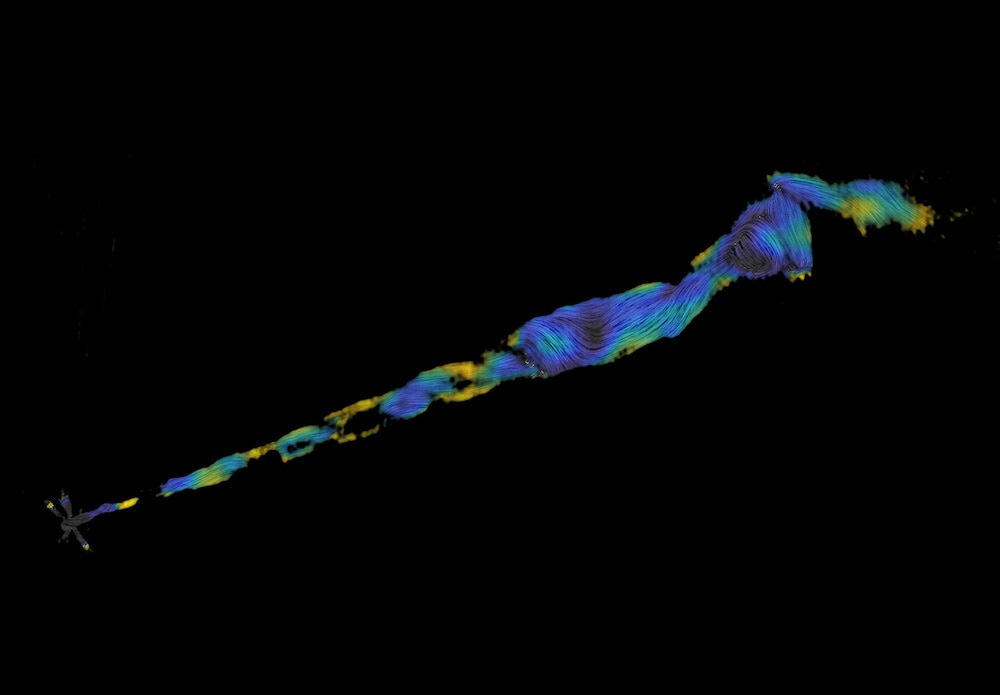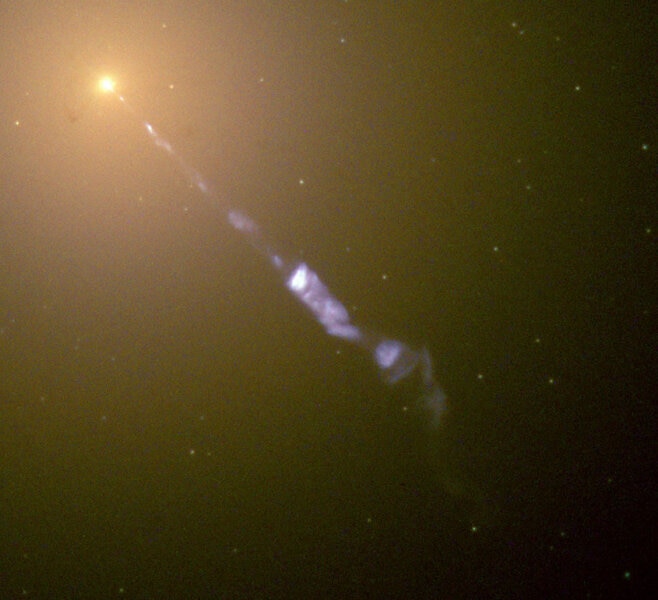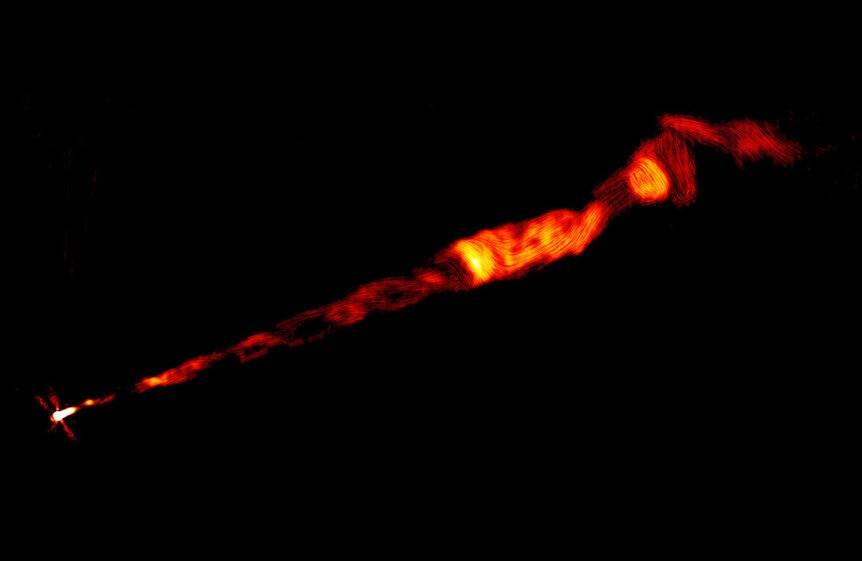Create a free profile to get unlimited access to exclusive videos, sweepstakes, and more!
Sampling M87's DNA: Double helix jet blasting away from the galaxy's huge black hole
Death ray looks like life's blueprints.

Galaxies aren't alive. It can be a useful metaphor — they are born, they live, they die — but animism shouldn't be used literally with them.
And yet, some have a double helix. Shades of DNA!
In this case the double helix is quite literal, though it's not a genetic blueprint, of course. Still, studying it can reveal much about what happens at the galaxy's heart, where a dark monster rages and spews.
M87 is a gigantic elliptical galaxy, far larger and more massive than our own considerable Milky Way. It lies 55 million light years away in the exact center of the enormous Virgo Cluster of galaxies. If M87's name is familiar, that is likely because the 6.5 billion solar mass supermassive black hole in the center of the galaxy has been studied intensely by astronomers, and an array of globe-spanning telescopes were combined to take images of it to reveal its "shadow" in 2019.
Long before then, though, astronomers spotted a strange feature in M87, a linear ray of light emanating from the center and shooting across to great distances. We now know that this is a highly focused beam of matter that is both immense —many thousands of light years long — and powerful, blasting out billions of times the Sun's energy.
It's powered by the supermassive black hole at the galaxy's core. Matter is falling toward the black hole, and as it does so it piles up in a huge flat structure called an accretion disk many light years in diameter. This material orbits the black hole, and matter closer in moves far more rapidly than material farther out. The friction induced by this generates staggering amounts of heat, with the matter in the disk reaching millions of degrees. This rips electrons from their atoms, and as the disk swirls this in turn creates a magnetic field permeating it.
Near the center, just outside the black hole, the magnetic field gets twisted up. Some of this is due to the disk's rotation, but in M87 much of it is because the black hole is spinning, and dragging the fabric of spacetime along with it. This sounds bizarre, but is a well-understood consequence of General Relativity. This drag, called the Lense-Thirring effect, winds the magnetic field of the inner disk up until it lifts up and down from the disk, away from the black hole, like two towering tornadoes pointing in opposite directions.
The magnetic field strength is intense, and can rip material out of the disk before it falls into the black hole, blasting it away into space at an appreciable fraction of the speed of light, creating the M87 jet. If the black hole is its engine, the magnetic field is its framework.
New observations using the Very Large Array in New Mexico have probed the structure of the jet to unprecedented detail. Electrons spin madly around the magnetic field lines of the jet, which causes them to emit radio energy — what's called synchrotron radiation — and that can be used to determine a lot about the physical nature of the jet. The radio light is polarized, and that tells astronomers the strength and direction of the magnetic field of the jet.
And what they found was that the material in the jet forms a double helix, remarkably like the twin spiral structure of DNA, the genetic instructions for almost all life on Earth.
That wasn't unexpected. Years ago, astronomers posited that the jet has a double helix pattern created by the way matter is flowing outward. If you imagine the jet is shaped like a cylinder blasting through surrounding material in the galaxy, shear forces will create instabilities in it, and it will ripple. These are called helical Kelvin-Helmholtz instabilities, and on Earth a related effect can create weird, saw-tooth wave shaped clouds, which I have had the pleasure of seeing many times.
The ripples help compress the material and maintain the magnetic field for incredibly long distances in the jet, thousands of light years. They follow a spiral pattern that creates the double helix shape of the jet's radio emission, and in fact the astronomers in the new work show that where we see the jet brighter in spots is where we see the two spirals overlap as they corkscrew their way through space.
I'm not sure what's more amazing about all this: That we could see this structure at all, or that this was all predicted via incredibly complex math and physics.
M87 is the closest galaxy we know of that has a jet, and our tech is now advanced enough that we can just squeeze out this detail in it. But the results show that the reason the jet can be so long is that the magnetic field is supported by the instabilities in the matter flow, which means that in other galaxies where we see long jets — but which are too far away to see details as yet — they too should show the double-helix structure. And we do see many galaxies with jets, some far, far longer than the one in M87, and these observations will help astronomers better understand the immense power and forces involved in creating them.
M87 is the gift that keeps on giving. We have seen its black hole, measured its gravitational might, looked at the magnetic fields swirling in it, and now peered closely at the scaffold that sculpts the jet, allowing it to glow with the power of a myriad suns.
It may not be alive, but we are, and my own life is energized knowing we can do things such as these.





























